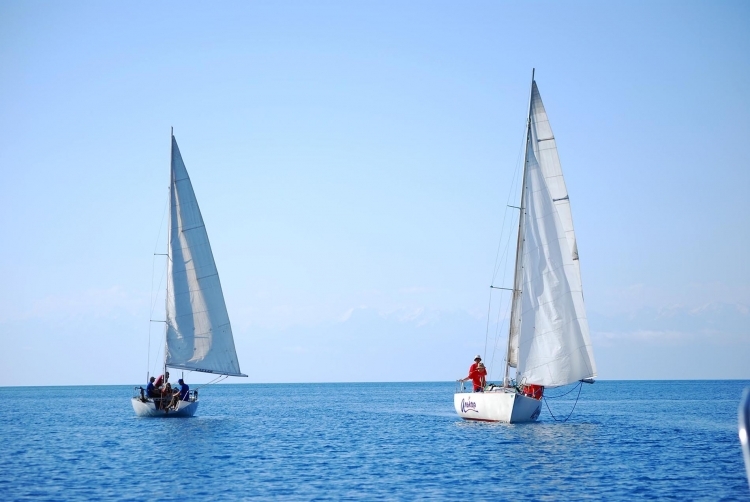Issyk-kul lake - mountain lake in Kyrgyzstan
Issyk-kul lake - great warm mountain lake in Kyrgyzstan. Lake Issyk-Kul is the second largest mountain lake after Lake Titicaca in South America. It is among the 25 largest lakes in the world and is in seventh place on the list of the deepest lakes on our planet. The length of this lake from west to east is 178 km, from south to north - 64 km, the maximum depth is 668 m. Issyk-Kul Lake also ranks second in water transparency after Lake Baikal. The lake climate is very mild. In summer the average temperature is + 17 ° C. It would seem that at such a low summer temperature the winter should be very cold but actually the winter here is quite warm. In January the average temperature is -3 ° C. The number of hours of sunshine is 2700 hours, which is even more than on the Black Sea. The local population calls Lake Issyk-Kul "The Pearl of Kyrgyzstan". Like a small bead strung on a chain of mountain ranges it really justifies its name.
The “Pearl of Kyrgyzstan” is located at an altitude of 1606 meters above sea level and is surrounded on both sides by ridges with poetic names Terskei Ala-Too (Turned from the sun) and Kungei Ala-Too (Turned to the sun).
Issyk-Kul in Kyrgyz means “Warm (hot) Lake”. Why is it warm? - because apart from certain coastal areas Lake Issyk-Kul does not freeze in winter. There are several versions of this phenomenon: some refer to the fact that there are thermal springs at the bottom of the lake that maintain its temperature above + 4 ° C; some believe that it is simply influenced by environmental factors, such as: mild winters, heat reserves in the vast water column, salinity of the lake, etc.
Another feature of the lake is all of its tributaries the number of which is about 80. Descending from the snowy mountains they all rush their waters to a huge lake,but none of them then leave it. Despite this,the lake continues to shallow every year. Scientists are still unable to determine the exact cause of the lake's drying out: some refer to the fact that local residents take the water of the tributaries for irrigation, some curse global warming, but none of them have come to a common opinion.
Lake Issyk-Kul attracts the attention of not only beach-goers and travelers who dream of seeing the “Kyrgyz Pearl” but also historians, archeologists and treasure hunters. Many different legends and stories are connected with the lake. According to the data of historical science up to 200 large and small treasures could be found in the Issyk-Kul lake region.
More Info
Terrain features
- Rivers
- Waterfalls
- Mountains
- Snow peaks
- Glaciers
- Alpine meadows
- Lakes
- Endemic plants
- Forest
- Panoramic view
- Nature reserve
Wildlife
- Mountain goats
- Marmots
- Birds
- Predator birds
- Rodents
- Yaks
- Flamingo
- Hares
- Swans
- Snakes
- Boars
- Brown bears
- Wolves
- Foxes






